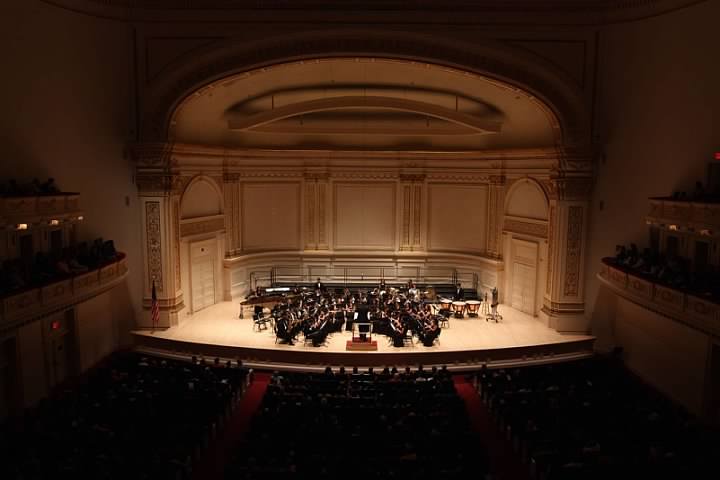Distinguished Concerts International New York (DCINY) presents Vocal Colors
The Music of Ivo Antognini
Ivo Antognini, visiting composer
Distinguished Concerts Singers International from Lee’s Summit High School Concert Choir and Kearney Chamber Choir (Missouri), Jerry McCoy, director
Khorikos, Alec Galambos, assistant director
Alice Tully Hall at Lincoln Center, New York
March 22, 2016
Khorikos, are you listening? I don’t mean to each other, I mean to me . . . I’m a huge fan! Previous to this concert, I had not known of your work. You had me at “Christ,” the first word of the first selection, Bach’s chorale Christ ist erstanden, BWV 276. What ecstatic excellence poured out of this small group, which stood in a humble semicircle of two rows, in front of the risers. They sang selections from six centuries of a cappella music, in six different languages, with such purity and passion. I can’t recall the last time I attended a vocal event this good—and I’ve been swimming in a spring season full of choral concerts, all of which have had their “moments.”
Ranging from the Renaissance to the twenty-first century, their repertoire is perfectly rendered at all times. There is an interesting nuance they do a lot, consisting of a note (or chord) that “travels,” what I mean by that is, it doesn’t hold still on a white, pure sound, but a sort of urgent crescendo is placed on it, which varies according to the needs of the composer, text, and/or phrase. It could have become mannered, but was deployed with such musical wisdom that I now wonder why all choirs don’t do this.
The Rautavaara Avuksihuutopsalmi had a wonderful choral glissando (in an upward direction) that occurred in each verse. If you’ve never sung in a choir, you have no idea how difficult that is to execute with everyone landing on the desired chord in tune.
The two Italian works (Monteverdi and Gesualdo madrigals) were stunning. They were followed by American composer Samuel Barber’s rarely heard Three Reincarnations, the first and third of which were conducted by an uncredited man other than Mr. Galambos. The third, The Coolin, was particularly moving. Guillermo Martínez’s No llora, paloma mia was a tour de force, with discreet narration and all manner of vocal effects. Khorikos closed with a lively number (unusual for Arvo Pärt), and the audience leapt to its feet.
After intermission, two high school choirs from Missouri took to the risers, and were conducted by the excellent Jerry McCoy. They sang music of only one composer: the Swiss Ivo Antognini, who writes in a conservative idiom, but with high-quality, spiking his choral music with juicy clusters and smudges of tone and usually resolving everything by the final chord. In fact, my only (minor) suggestion to Mr. Antognini would be to vary his endings a bit more. I’d love to hear something “less” triadic as an ending, maybe more dissonant, more questioning . . .
The selections were mainly sacred, with five in Latin and two in English. His Ubi caritas, a classic medieval text that has been set notably by Maurice Duruflé and Paul Mealor, was stunning. Mr. McCoy delivered a verbal program note that it was dedicated to the “people in Belgium” in light of the previous day’s attack.
Throughout each work, the choir performed so well, it would have been the envy of many a professional group. Every nuance was audible, and the dynamic range was well-varied and large; so often massed-choirs fall victim to a generic loudness.
The Victorian-era paean to self-reliance and perseverance Invictus, which is hard for me to stomach as a poem, but did offer comfort to Nelson Mandela during his long years of imprisonment, was actually very convincing in Mr. Antognini’s setting. Perhaps I need to re-examine the poem!
The group closed with Canticum Novum (Sing unto the Lord a new song, Psalm 98), with energy, excitement and beauty. What a gift DCINY gave us on Tuesday night!


